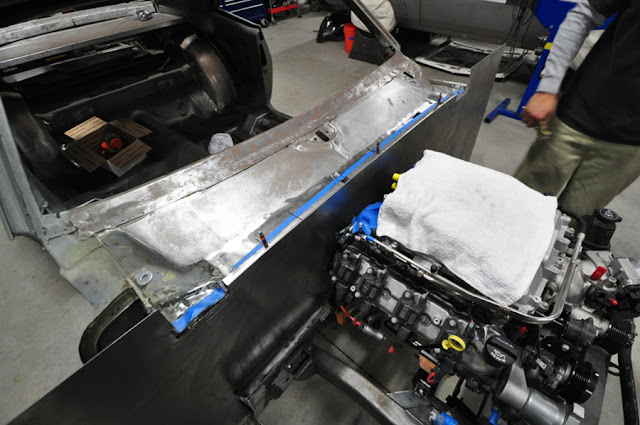When it came time to build a roll cage the question we had to answer was"what rule set should it be built to?"
The Tire Rack One Lap of America has no rules but some of the other events that we want to run - The Silver State Classic Challenge, Targa Newfoundland, and the Chihuahua Express - have explicit but not necessarily consistent guidelines. Ultimately we chose to build the cage to the most stringent - and logical - rule set we could find: NASA Rally Sport. It meets or exceeds most all road course rule sets and essentially follows FIA guidelines. Going this route means that the OLC2 will not only have a cage that we can be confident in but also that we will (we should) qualify for a Log Book as an Open 2WD Heavy car under Rally Sport rules.
The NASA Rally Sport roll cage rules break the construction in to seven required elements with options for each provided within the rule set. Follow along with our design...
Required Element 1 - Main Roll Cage Structure & Backstays
Design 253-3: One piece main hoop, two forward bars tied across the top of the windshield and two straight rear backstays.
while not part of Element 1 we added a bar behind the dash that will tie forward and support the pedal block.
the front bars in to the engine compartment are also not part of Element 1 but we wanted to position them as our work on the front continued. These bars may cause some issues with RS compliance as some groups prefer to see more crumple zone in front of the suspension but we should be OK.
With the main cage framework in place we mocked up some of the future elements
Required Element 2 - Roof Bars
Required Element 3 - Backstay Diagonals
The design for Element 2 and Element 3 ultimately tie in to one another. We chose 253-14 for the roof bars which dictates 253-22 for the backstay diagonals. Essentially these two elements consist of two "V" shapes which meet at the top of the rear main hoop.
Required Element 3 - Backstay Diagonals
The design for Element 2 and Element 3 ultimately tie in to one another. We chose 253-14 for the roof bars which dictates 253-22 for the backstay diagonals. Essentially these two elements consist of two "V" shapes which meet at the top of the rear main hoop.
This first attempt at the backstay diagonals was quickly scrapped as the diagonals did not end in the proper position. In me mean time work commenced on the next element
Required Element 4 - Main Hoop Diagonal Members
Design 253-7 - an X across the hoop with a separate harness bar that will be behind the X
Backstay diagonals are now in the proper position terminating within 3" of the backstays
Required Element 5 - Sill bars
Required Element 7 - Door Bars
This design ultimately results in three door bars - one horizontal bar parallel to the sill and two bars making an X across the door entry. This design is a variation of 253-9 which uses two shallow U shaped bars which meet in the middle.
which also includes
Required Element 6 - A-pillar reinforcement
also known as an FIA bar.
Looks almost like a '67 with a vent window...
All of the elements are coming together now...
And will all of the required elements in place we added the required gussets - in this case we chose to use "Taco Gussets"
We chose to add some additional protection for the foot wells and will now begin welding everything together...
stay tuned!







































































